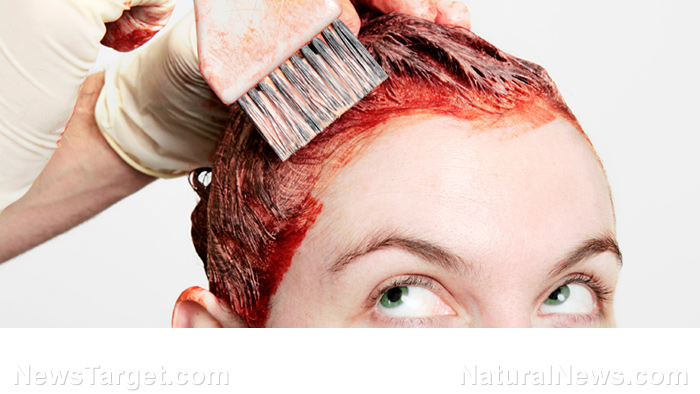
"Been battling this for a year now, but it gets worse every time. It's an acquired allergy for people that dye their hair for years," the actress tweeted.
According to the article, an allergy to hair dye is uncommon, but not unheard of -- affecting one in about 250,000 people. The allergy, as in the case of Perrette, may develop slowly over time. The allergy could present itself subtly, initially causing just one or two mild symptoms. But these should not be taken lightly. Any experience of redness, swelling, itching, or burning, that can occur after using or being exposed to hair dye could indicate an allergy, and must be consulted with an allergist or dermatologist right away.
The allergy is caused by a compound called paraphenylenediamine, or PPD, which can be found in most commercial hair dyes. According to Perrette, black dye is the worst for allergies, but reactions can be caused by any shade of hair dye you use. Women are advised to do a simple skin patch test before using any hair dye, or better yet, opt for natural, non-toxic, chemical-free alternatives.
Dangerous dyes
Apart from the risk of extreme allergic reactions, hair dyes have also been associated with an increased cancer risk. According to the American Cancer Society, there is a possible link between hair dye and cancer, with particular focus on blood cancers such as leukemia and lymphoma, as well as bladder cancer. Studies have been conducted either by exposing lab animals to certain ingredients in hair dye, or by examining cancer rates among groups of people who have been exposed to or use hair dye chemicals.
Some lab studies have resulted in test animals getting cancer after being fed large amounts of dyes over a period of time. At the same time, studies examining exposed people have found an increased cancer risk. One study focused on non-Hodgkin lymphoma, a type of blood cancer. It found that women who use hair dyes, especially those who started use before 1980, or use darker colors, had an increased risk for certain types of the disease.
At the same time, studies of hairdressers and barbers who are exposed to hair dye at work have shown a "small but fairly consistent increased risk of bladder cancer," among the demographic.
The International Agency for Research on Cancer (IARC) has cautioned against hair dye exposure, particularly among hairdressers and barbers, saying that workplace exposure is "probably carcinogenic to humans", though the group has not yet classified personal hair dye use. At the same time, the National Toxicology Program (NTP) has not yet named hair dye exposure as a cancer cause, but classified some chemicals used in dyes as carcinogenic.
Get more updates about personal care products at Cosmetics.news.
Sources include:
Please contact us for more information.























